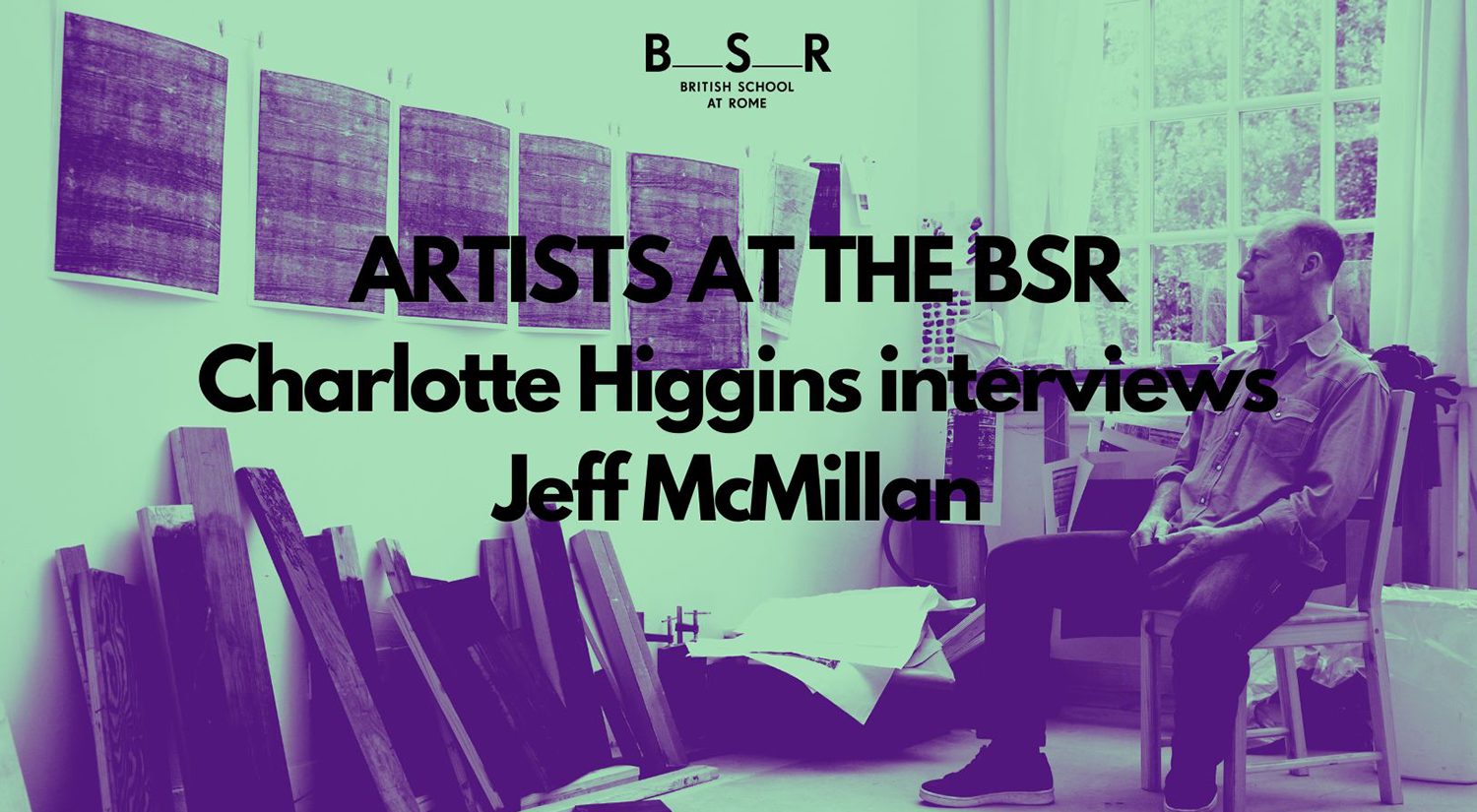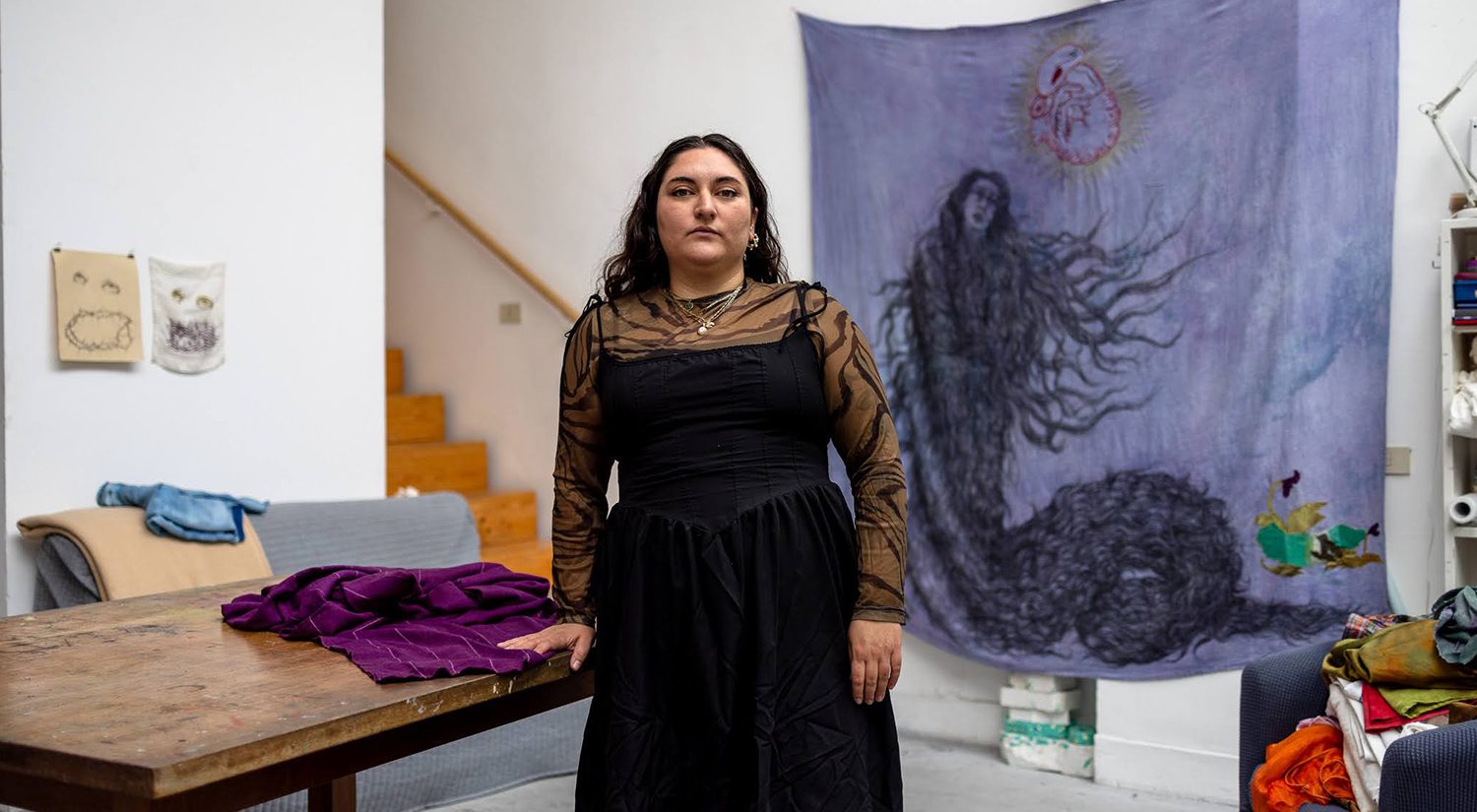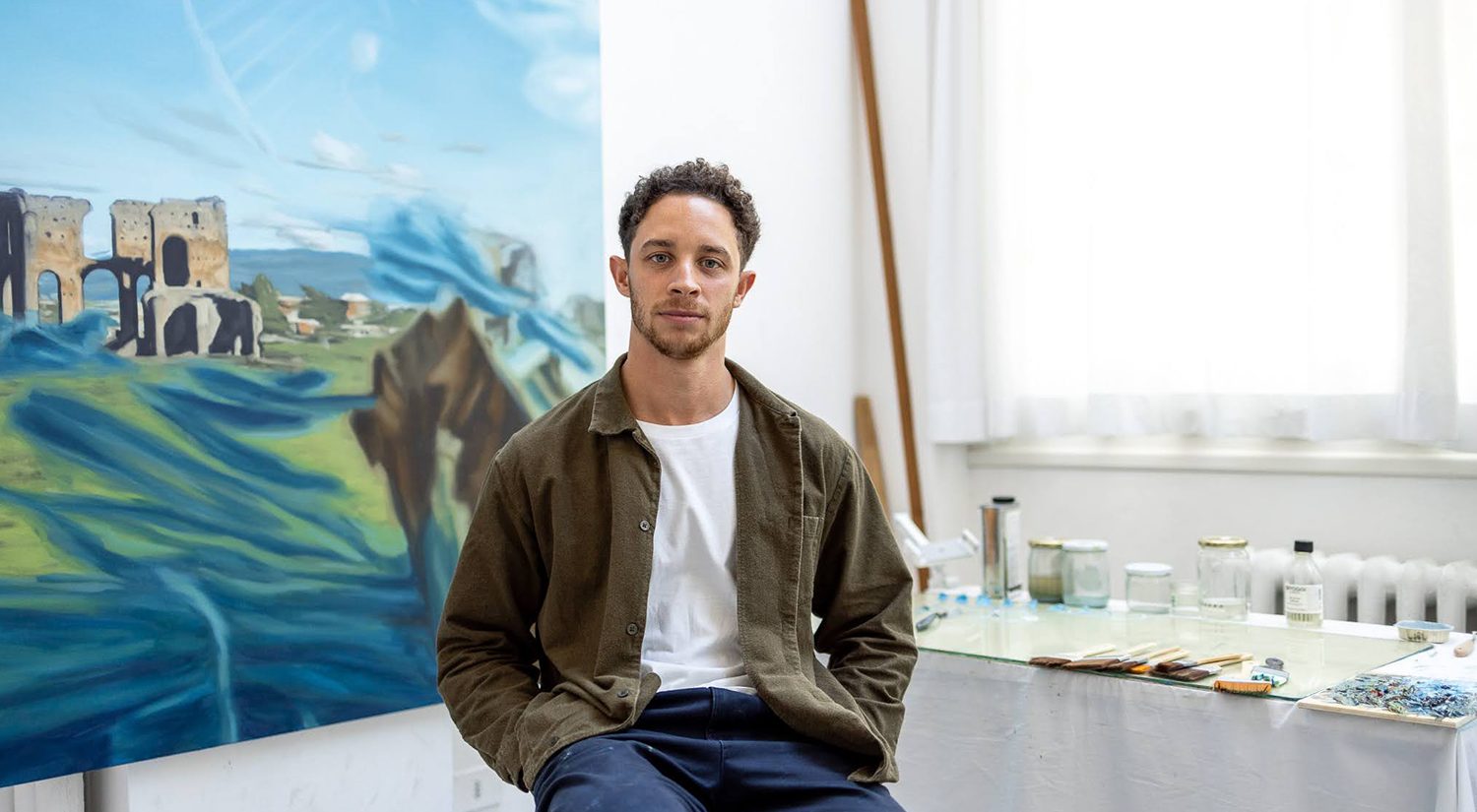An interview with Olivia Daigneault Deschênes, Quebec Resident, in which she speaks about the work she has produced during her residency at the BSR from April – June 2023, ahead of the Summer Open Studios.
Your project in Rome revolves around themes of architecture and feminism. Could you tell us more?
My feminist awakening coincided with my architectural education. Since then, I carry the question of how my chosen discipline can contribute to feminist struggles. More specifically, I am interested in exploring how the architectural design tools can be put to use for the production of critical feminist knowledge. Rather than taking the problem-solving approach, I’m interested in research-by-design processes that use architectural tools to extract and dissect how patriarchal forces come at play in a given context. Through architecture, I aim to make tangible and explicit a reality that is otherwise banalised or invisible. I believe in the importance of provoking emotions in order to generate new understanding and eventually induce change.
For my time in Rome, I focused on the feeling of fear in public space. My work starts from my personal position: one of race and class privilege, intersecting with my gender identity as a cis woman. Upon my arrival to the British School at Rome, my ambition was to walk the different neighborhoods of Rome, at various time of day. When I arrived at the BSR, I soon noticed a physical barrier that would make things a little harder and uncomfortable: Villa Borghese Park. Indeed, one has to cross the park on foot to reach most places in the city. This left me feeling limited in my mobility, especially after being advised to not cross the park at night. So, this specific context became the starting point of my project here and Villa Borghese became my site of inquiry.

I approach the feeling of fear of public space as performative and partly induced. We are socially programmed to feel scared in public spaces such as parks at night, especially women. The paradox is that gender-based violence happens a lot in domestic space but receives way less attention [1]. I am interested in the social reproduction of women’s fear of public space, the impact it has on women’s lives but also the impact it has on other marginalised communities.
Digging further, while there isn’t always a correlation between fear and danger, I’m interested in understanding how some “safety” measures make public space even more dangerous to some communities, while transforming the white privileged woman into an agent of control. For instance, beautification measures will often involve pushing away houseless folks, or increasing police presence will put at risk black youth who are victim of police’s racial profiling [2]. This subject is complex, multi-layered and brings me to question my actions from a personal and professional level.

During your residency you have organised group walks in Villa Borghese during the day and at night. Could you explain the purpose and the outcome of these experiments?
My walks were inspired by exploratory walks, a participatory design method, that first emerged in Canada in the 90’s and consisted of a small group of women (or elderly, disable people, etc.) walking in a neighborhood and identifying elements of the built environment that make the space feel unsafe, to eventually proposing improvements. On the other hand, I also was inspired by Hille Koskela’s work on women’s fear and women’s boldness [3] in public space in Finland in the 90’s. Just like Koskela, I wanted to shift the focus away from the feeling of fear and allow ourselves to walk in the park at night as a group, as an act of reappropriation and of self-awareness. I asked participants to identify their feelings in specific spots of the park and to choose spaces where they would read, eat or exercise by themselves. This activity contributed to my reflection on how our fear of public space can play a purpose of control and on the subversive and liberating potential of bold behaviors.

I received a lot of positive feedback from participants of the exploratory bold walks. People enjoyed discovering new spots of the park and liked the playfulness of documenting the walk on a map. Afterwards, people would come to me and share their good and bad experiences of being in Villa Borghese by themselves.
In parallel to that, I did a lot of walks by myself, in Villa Borghese and in different areas of Rome. During my walks, I documented street signs, along with stickers and graffities. I studied their meaning and their graphic language but also their position in the city and the spatial relation they have with the rest of the built environment.
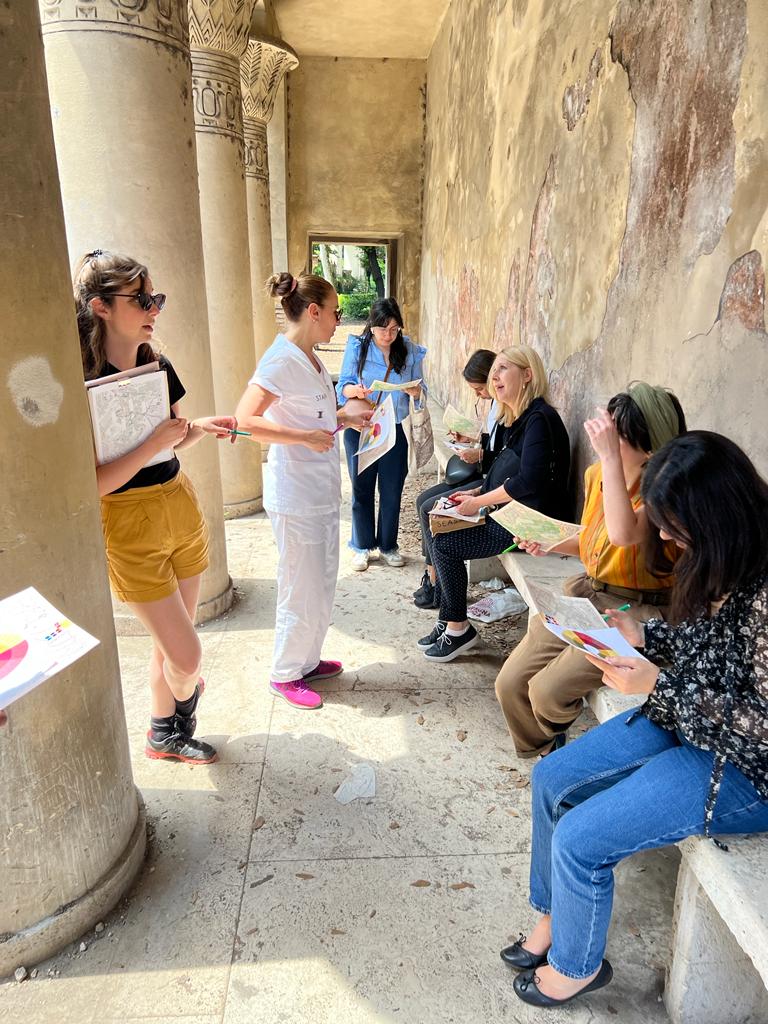
I then started to design street signs to tackle the topic of fear, safety, and surveillance in public space. My design proposal takes shape in two ways. First, I’m designing a series of street signs that make use of irony and exaggeration to shed light on the existing social and spatial dynamic that surrounds the question of fear in public space
The second part of my design proposal is inspired by activist action and in situ performances. As an extension of the exploratory group walks, I go out in Villa Borghese and place magnet letters on existing signs to propose a new meaning. This time, the slogans are not ironic but like the previous, they carry the potential of shifting our perspective on the instrumentalization of women’s fear in public spaces.
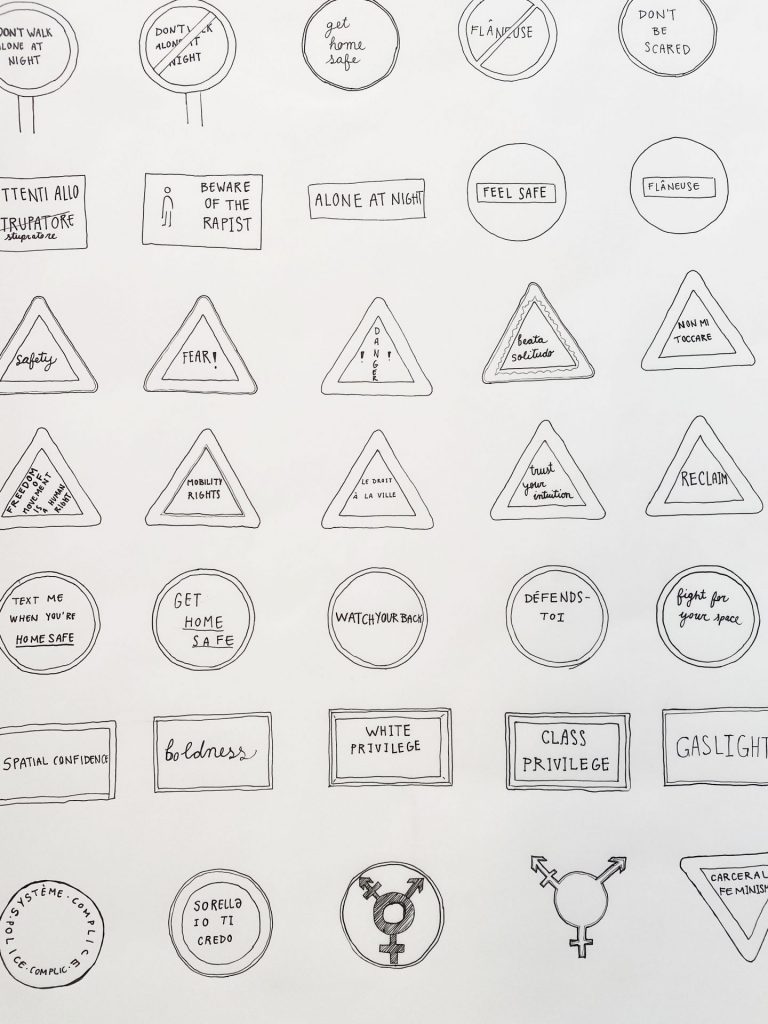
[1] Leslie Kern, “Women, Fear and Cities” Verso, March 15th 2021. https://www.versobooks.com/en-gb/blogs/news/5024-women-fear-and-cities
[2] Idem
[3] Hille Koskela, “Bold Walk and Breakings: Women’s Spatial Confidence versus Fear of Violence” Gender, Place and Culture, Vol.4 No 3 (1997): 301-319.


